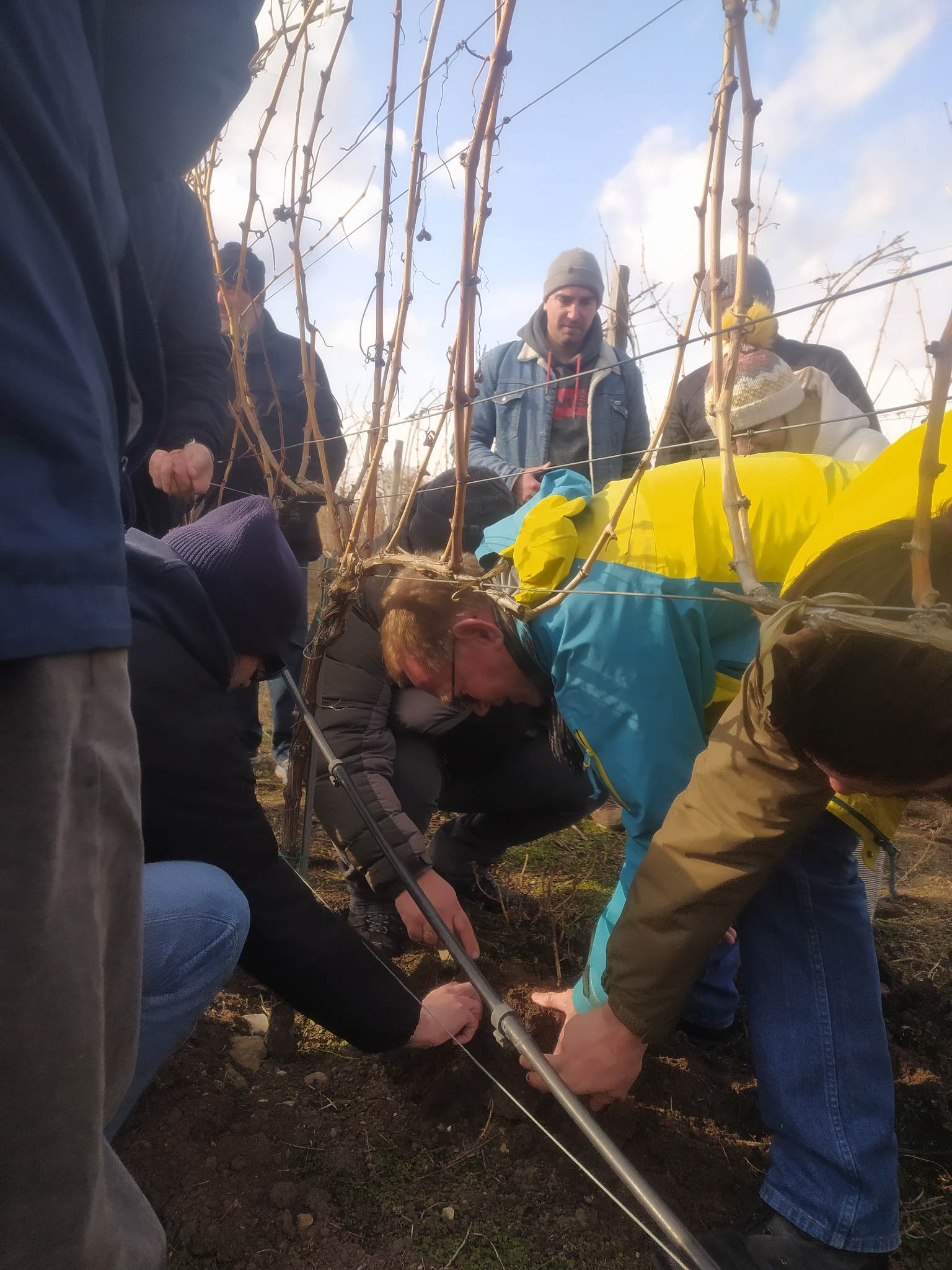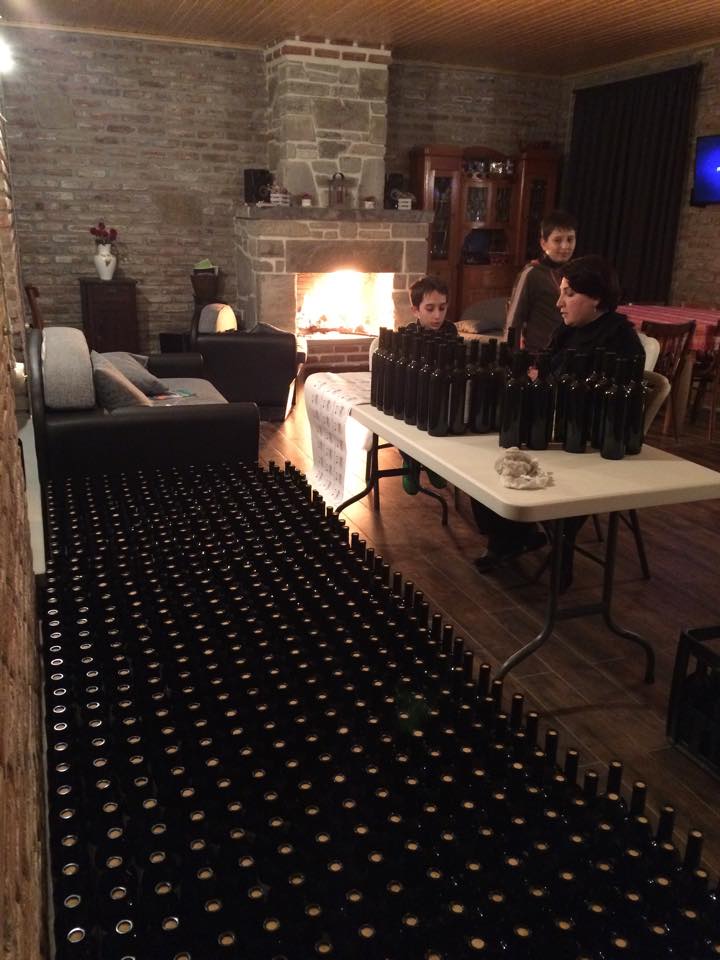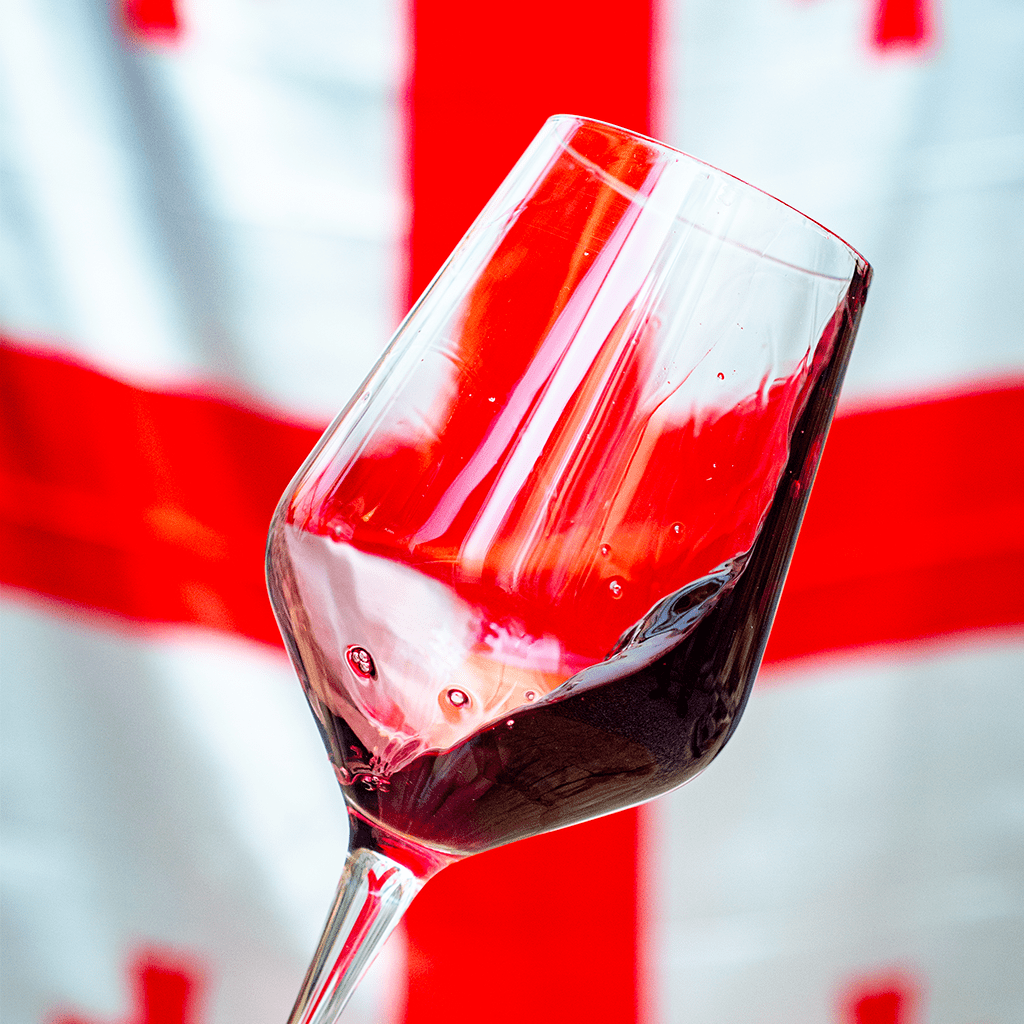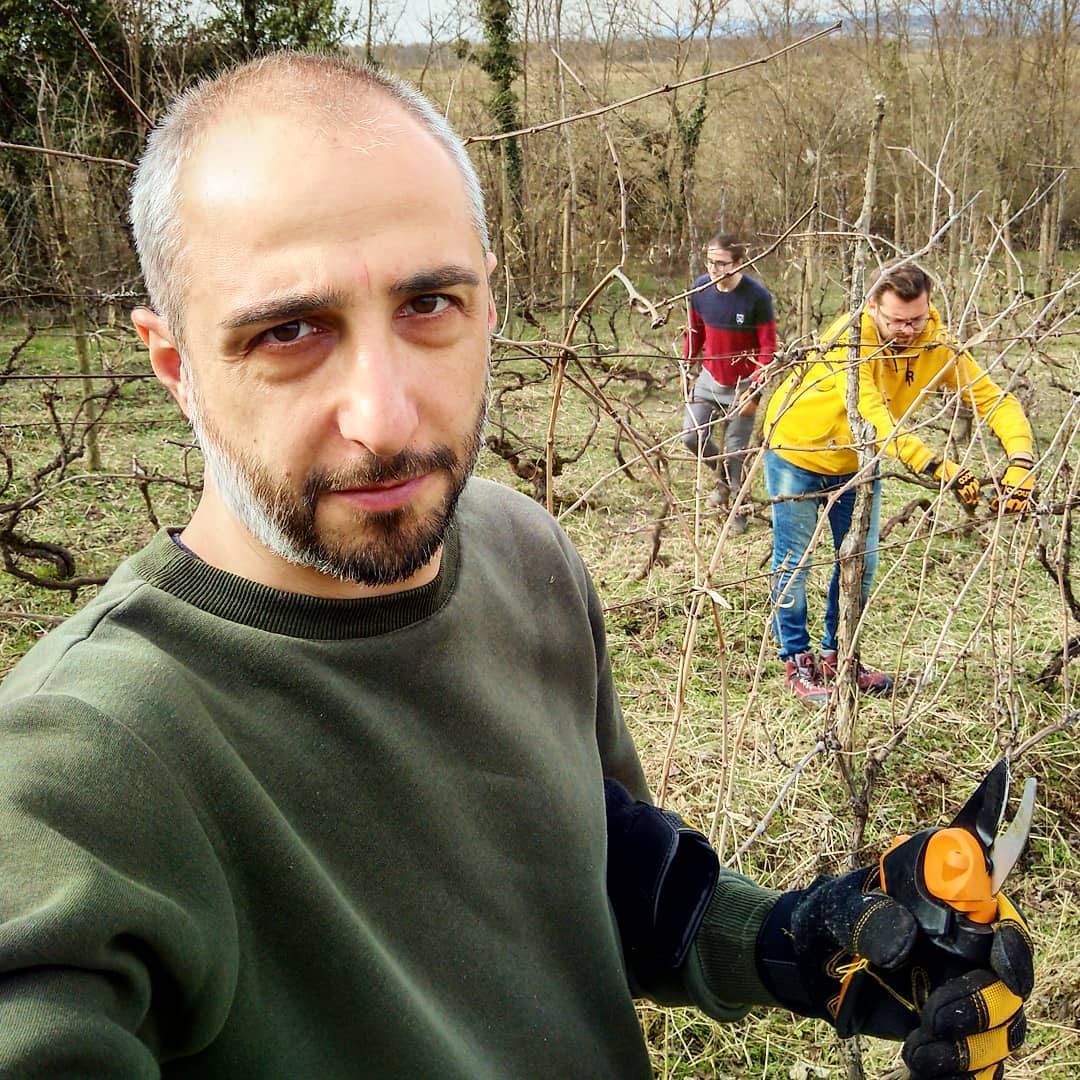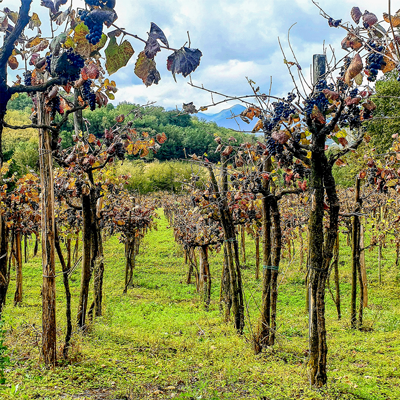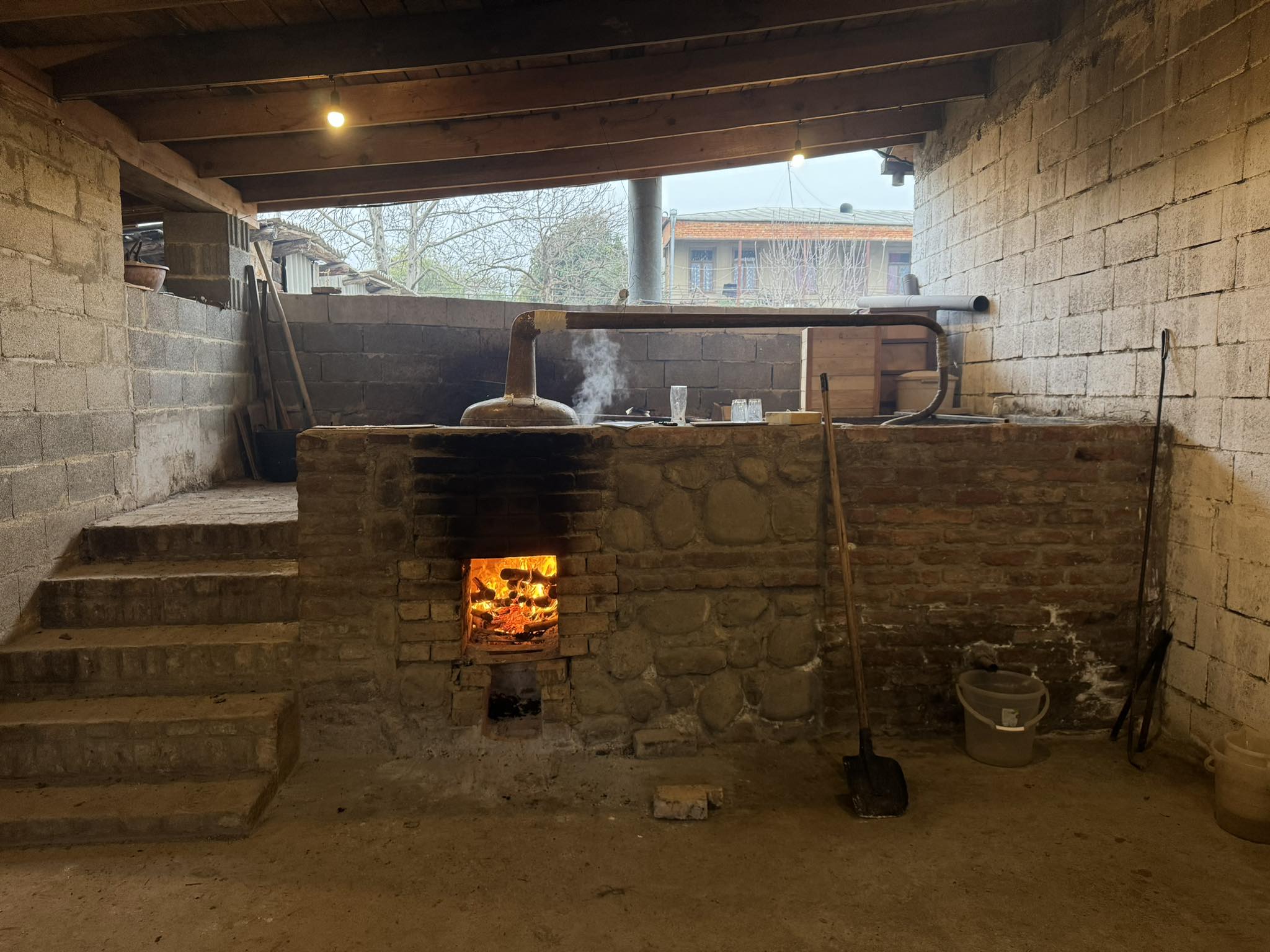News . 27-02-2023
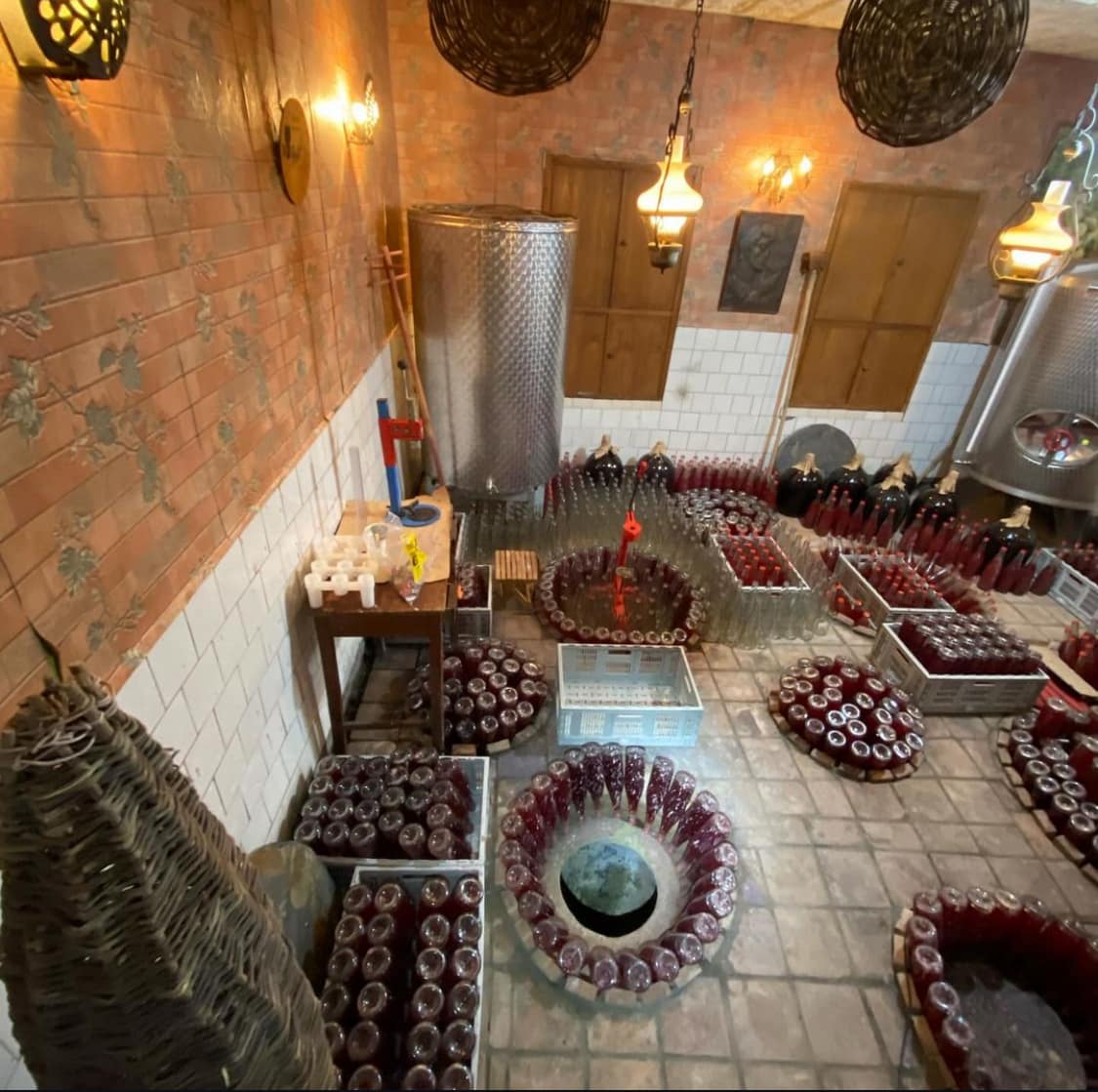
Discovering Pét-Nat: The Natural Sparkle of Summer
Blog by Nika Jeiranashvili
Kolagis
It’s summer, it’s hot, and it’s the perfect time for a chilled Pét-Nat. But what exactly is Pét-Nat, and how does it differ from Champagne and other sparkling wines?
Over the last 5-10 years, Pét-Nats have burst onto the wine scene in Georgia and around the world, becoming a staple in the everyday wine world. Despite their relatively recent popularity, Pét-Nats are made using the oldest method known to humanity, predating even the “traditional method” used in Champagne and most other sparkling wines.
The name Pét-Nat comes from the French “Pétillant Naturel,” meaning naturally sparkling. These wines embody true artisanal craftsmanship, typically produced in small batches with a natural winemaking approach. Whether white, red, or rosé, Pét-Nats often have a cloudy appearance due to their unfiltered bottling, distinguishing them from the clear, mass-produced offerings of large Prosecco and Champagne houses. Most Pét-Nat producers follow organic or even biodynamic practices in their vineyards.
Pét-Nat brings sparkling wine back to its roots: uncomplicated, authentic, and perfect for any dining table.
Methods of Making Sparkling Wine
There are several methods for making sparkling wine, each resulting in unique styles and characteristics. Let’s explore some of the most popular methods:
- Ancestral Method (Méthode Ancestrale): This is the oldest method of making sparkling wine and is used for Pétillant Naturel (Pét-Nat). The wine is bottled before the primary fermentation is complete, allowing it to finish fermenting in the bottle. This creates natural bubbles, hence the name naturally sparkling. Some producers may disgorge to remove sediment, but many leave it for a more rustic style.
- Traditional Method (Méthode Champenoise): This classic method is used for Champagne and other high-quality sparkling wines. The base wine (cuvée) is fermented in tanks, then blended to achieve the desired style. A mixture of sugar and yeast (liqueur de tirage) is added, and the wine undergoes a second fermentation in the bottle, creating bubbles. The wine ages on the lees (dead yeast cells) to develop complexity and flavor. The bottles are gradually tilted and rotated to move the lees to the neck, then disgorged to remove the lees. A mixture of wine and sugar (liqueur d’expédition) is added to adjust sweetness before sealing with a cork and wire cage.
- Tank Method (Charmat Method): Used for Prosecco and other sparkling wines, this method involves conducting the secondary fermentation in large stainless steel tanks. The wine is transferred to a pressurized tank, and a mixture of sugar and yeast is added. After secondary fermentation, the wine is filtered to remove yeast and sediment, then bottled under pressure to retain carbonation. This method is quicker and less expensive than the traditional method, producing fresh and fruity sparkling wines.
- Transfer Method: Similar to the traditional method, but after the secondary fermentation, the wine is transferred from the bottles to a tank, filtered, and then rebottled. This method is less labor-intensive and can be used to produce sparkling wines at a lower cost.
- Continuous Method: This method involves a continuous process where the wine undergoes secondary fermentation in a series of interconnected tanks. It is efficient and cost-effective, often used for large-scale production.
- Carbonation: The simplest and least expensive method, where carbon dioxide is injected into still wine to create bubbles. It is typically used for lower-quality sparkling wines and can produce large quantities quickly.
The Ancestral Method: A Journey Back in Time
Among these methods, the Ancestral Method is not only the oldest but perhaps the most natural way of making sparkling wine. It dates back to the early days of winemaking, long before modern techniques were developed. Originating in the Gaillac and Limoux regions of France, records suggest its use as early as the 16th century. Monks at the Abbey of Saint-Hilaire in Limoux likely discovered it accidentally when they noticed that some wines, bottled before fermentation was complete, continued to ferment in the bottle, creating natural bubbles. This accidental discovery led to the intentional development of the Méthode Ancestrale.
In recent years, there has been a resurgence of interest in the Ancestral Method, particularly among natural winemakers. Its simplicity and the unique, often unpredictable results it produces have made it popular among those seeking to create authentic, terroir-driven wines.
Pét-Nats in Georgia: Tradition Meets Innovation
Currently, there is no law in Georgia or elsewhere regulating the production of Pét-Nats. This has led some industrial companies to exploit the loophole by labeling their sparkling wines as Pét-Nats. The Natural Wine Association does not have specific regulations on Pét-Nat production, but any method other than the ancestral one involves manipulations not allowed by the Association, such as adding sugar and yeast.
Because of this reason, the French natural wine association - Le Syndicat de défense des vins naturels does not grant natural wine status to any Champagne. The only winery from the Champagne region that has the natural wine label is Domaine de Mondeville, but the label is granted for the 2022 still red wine, not for a sparkling one.
Natural Champagne as such does not exist, as the champenoise method precludes natural winemaking. Natural winemakers have to stick to the ancestral method when making sparkling wines. However, one might argue that the carbonation method can also be applied for natural Pét-Nats. The carbonation method, also known as the injection method, involves injecting carbon dioxide (CO₂) directly into a still wine to create bubbles. This method is quite different from the ancestral method used for Pét-Nat and is generally considered less prestigious. While the carbonation method can produce sparkling wine, it does not align with the natural winemaking philosophy that Pét-Nat embodies. Pét-Nat wines are valued for their natural fermentation process and minimal intervention, which the carbonation method does not provide.
Our Journey with Pét-Nats at Kolagis
At Kolagis, we started making Pét-Nats four years ago. It was still early days for natural sparkling wines in Georgia, and very few natural winemakers were making them. Besides us, there were only 3 or 4 natural winemakers at the first sparkling wine fair in Georgia. But this number has doubled and even tripled during the latest sparkling wine fairs, showing a growing interest among natural winemakers to make Pét-Nats. This is good for us because we learn a lot from each other, experiment with different grapes and blends, and also enjoy our natural winemaker friends’ Pét-Nats when we get bored with our own.
Each year, we strive to perfect our wines and offer new and delightful tastes to our customers. Our philosophy is that we do everything by hand; every single operation, whether in the vineyards or in the winery, is performed by hand, and we do it ourselves, only the members of our family. We always use our own grapes and do not hesitate to experiment, creating blends that nobody has ever tried before. For example, we introduced Rkaperavi in 2021, a blend of the two most famous Georgian grapes, Rkatsiteli and Saperavi, as well as Chinuravi (a blend of Chinuri and Saperavi) last year.
Embracing the Natural Sparkle
Pét-Nats offer a delightful and authentic sparkling wine experience, bringing us closer to the roots of winemaking. Their natural fermentation process, minimal intervention, and unique flavors make them a perfect choice for those seeking something different and genuine. As more winemakers in Georgia and around the world embrace this method, the variety and quality of Pét-Nats continue to grow, offering endless possibilities for exploration and enjoyment.
At Kolagis, we are proud to be part of this movement, crafting Pét-Nats that reflect our dedication to natural winemaking and our love for innovation. Whether you’re a seasoned wine enthusiast or just beginning your journey into the world of natural wines, we invite you to discover the magic of Pét-Nats and join us in celebrating the natural sparkle of summer.
Cheers to natural wines and the joy they bring to our t
